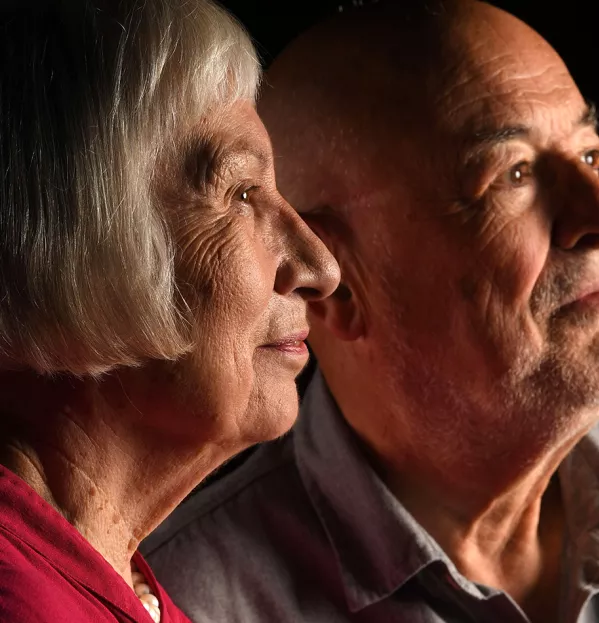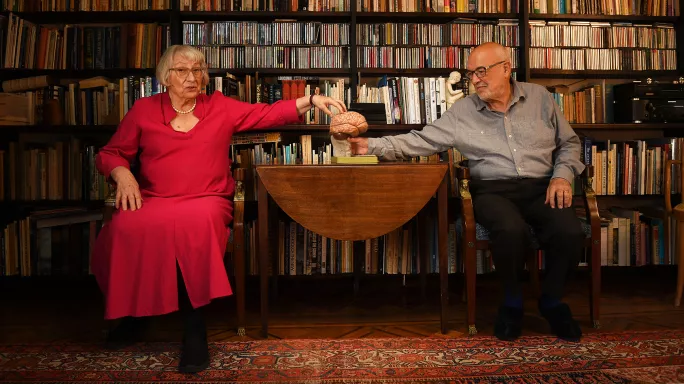
- Home
- Teaching & Learning
- General
- Why explicit instruction matters, according to neuroscience
Why explicit instruction matters, according to neuroscience

Have you ever wondered why when one child yawns, that yawn often spreads around your classroom? Or why it’s so hard to keep a straight face when trying to tell off a pair of giggling pupils?
The answer lies in a branch of psychology called social cognition: the study of the various psychological processes that allow humans to take advantage of being part of a social group.
Social cognition explores how we unconsciously draw on various social signals, such as facial expressions, in order to learn about the world.
But it is also beginning to help us to understand the evolutionary basis for explicit instruction - and that, according to neuroscientists Uta and Chris Frith, makes social cognition very relevant to understanding more about what teachers do in the classroom.
Uta is emeritus professor of cognitive development at University College London’s (UCL’s) Institute of Cognitive Neuroscience, and her husband Chris is emeritus professor of neuropsychology at UCL’s Wellcome Centre for Human Neuroimaging. Together with their son Alex, they have written a new book about social cognition entitled Two Heads: a graphic exploration of how our brains work with other brains.
Neuroscience: the role of social cognition in teaching and learning
The pair sat down with Tes to explain more about the role that social cognition plays in teaching and learning - and what that might mean for classroom practice.
Tes: What is social cognition?
Uta: Often people think it’s about perceiving emotions, feeling empathy and displaying people skills. But that’s far too limited an understanding; there is so much more to it than that.
Chris: Social cognition, in essence, is the idea that our brains are designed to work with other brains. We’re a hyper-social species; it’s all about working together.
Emotion does come into it, when you think about what we call emotional contagion: if you see someone happy, you will feel happy. If you see someone sad, you will automatically feel sad.
- Education research: How neuroscience can help struggling pupils
- Pedagogy: Why understanding the brain can help your teaching
- In practice: How I teach neuroscience to primary school pupils
But another basic aspect of social cognition is learning from others. Most of what we know about the world, we’ve learned from other people - by being with others, working together with others, learning together with others.
Uta: These are deeply unconscious processes you’re born with, and which our brains have evolved to have. And while teachers should be pleased to know about them, they’re not things to be taught. We just have them anyway.
If learning is unconscious, does that mean explicit instruction isn’t as important as we think?
Uta: Quite the opposite. The act of teaching is one element of social cognition that is unique to us as humans. That’s one of the reasons why we think teaching is a human superpower. It’s really very difficult to find any examples in other social animals of deliberate teaching.
We have this idea that the mother cat “teaches” the kittens to chase after mice, but that’s complete nonsense because the young kittens will do that whether the mother is there or not. It’s nothing to do with teaching.
Chris: We can look at meerkats, too. At first glance, it appears that meerkats “teach” their pups how to deal with scorpions. The very youngest pups are given a dead scorpion, the slightly older ones are given a scorpion with a sting removed, and then the oldest ones are given a live scorpion. This looks like teaching, right? But actually, it’s entirely based on the cries of the pups. If an elder pup makes a very high squeaky noise, they will be given a dead scorpion.
However, in human teachers, there’s what we call mutual adaptation.

What do you mean by “mutual adaptation”?
Chris: An example would be where a teacher is adapting their teaching to what they believe is the knowledge of the pupil. They will change the way they give the instructions by noting whether they’re being understood or not.
What is interesting is that once the teacher has taught an individual child a concept, the child’s idea of the concept has changed considerably due to the teaching, but the teacher’s idea has changed a bit, too, because they’ve had to adapt to the understanding of the child. It’s a two-way interaction, which is very important.
So, when we talk about what makes learning effective, do we need to think more about the processes that are taking place in the brain of the teacher?
Uta: Yes. One thing that we feel a bit critical about is how educational neuroscience and other educational research seems to concentrate too much on the learner, and what’s happening in their brain.
There’s this idea that information is just being sent into the brain of the learner, and we need to understand the best way to send it. But that’s not how it works; there’s mutual communication going on.
‘The processes that are going on in the brain of the teacher are just as important as those in the brain of the learner’
So, we need to get away from this model of just focusing on the student and neglecting, to some extent, the role of the teacher, because the processes that are going on in the brain of the teacher are just as important as those that go on in the brain of the learner.
And how teaching actually happens is the most exciting thing. We hardly know anything about that process, really, although we think a good start is just to think about how an instruction gets into the brain in a way that enables you to follow it.
Why are instructions so important to focus on?
Chris: There’s a nice example of why this is so interesting to us. In Japan in 2002, researchers taught monkeys to do a task called the Wisconsin Card Sorting Test (WCST) and found that, when [the monkeys were] learning the task, the parts of their brains that lit up were the same as when humans did this task.
It took the researchers a year to teach monkeys to do the task - whereas to teach people, it takes only a few minutes of verbal instruction.
Uta: Instructions given by teachers, then, are amazingly powerful at saving huge amounts of time and effort, saving you from having to learn by trial and error forever.
What other aspects of social cognition would be useful to explore if we want to understand more about how teaching and learning happens?
Uta: Alignment and the role of mirror neurons is one area to think about.
Alignment is a process that enables creatures to function as groups. This happens in humans, bees, birds and fish, and it is absolutely essential. It allows us to do things together, like walking at the same pace, fleeing together as a group from a predator or hunting together for prey.
Chris: Alignment links to mirror neurons, which were discovered in the 1970s and are what make us imitate the actions of others.
‘Instructions given by teachers are amazingly powerful at saving huge amounts of time and effort’
There is evidence to show that when you see somebody else performing an action, the bits of your brain that would be needed to perform that action also light up. So, you’re always ready.
That might explain why modelling is such an important part of teaching, then?
Chris: Right, but it’s important to point out that alignment isn’t always a good thing. There’s a study, for example, which shows that if you’re waiting to cross the road, people tend to follow the others as soon as they start crossing, even when it’s sometimes dangerous.
Uta: You have to learn to inhibit yourself in those cases.
Chris: Yes, and to go back to emotions, if you see someone with a sad face, you will automatically feel sad, but this is not necessarily a good thing if you want to cheer them up.
So, in fact, to cheer somebody up who’s feeling very depressed, you actually have to think about the fact that you don’t want to look miserable; you have to pretend to be happy. You have to learn how to control your emotions to use them appropriately in certain situations.

What else do we need to consider when we think about how social cognition affects teaching and learning?
Uta: When we are talking about mirror neurons, we should also consider “in” groups and “out” groups. We don’t imitate just anybody; we imitate those who are in our “in” group. So, “in” groups can be very powerful.
But, as I’m sure teachers are aware, forming an “in” group also immediately gives you an “out” group, which you want to be different from. You may even despise them; you may want to say they’re not doing it right or that they’re stupid or something.
Chris: And this relates to over-imitation. We talked about how you automatically imitate other people’s actions, which is useful in an evolutionary sense, because that’s how you learn to find sources of food or how to crack open nuts.
But you also have over-imitation, which is where you imitate actions that are not necessary to achieve your aim, purely to show that you’re part of the group.
Indeed, there are experiments on ostracism that show that if you’ve been excluded from your group, you imitate them even more to try to get back into the group.
Is there a way that teachers could harness this behaviour in a positive way? For example, could they get the “in” group to perform the behaviour they want everyone else to imitate?
Uta: That’s a good idea, but it’s difficult, because there isn’t just one “in” group. We know that it’s incredibly important for our identity to be able to identify with a group, and that, in turn, distinguishes us from other groups.
You can see this in the football teams people support. It can sometimes be quite arbitrary, not necessarily the local team.
But these groups can also be formed around where you’re born, which country you’re from, what language you speak, what religion you have.
It’s a difficult subject because we all have negative stereotypes about people in other groups. That’s an interesting consequence of this process of finding your social identity, and it’s not always good.
Might teachers be able to overcome some of those negative aspects of group dynamics in the way they engineer learning groups in their classes?
Chris: You can, to some extent, create new groups.
For example, research shows that if you see someone having a needle pushed into their cheek, bits of your brain light up and you feel their pain, so to speak. This is empathy. However, if the person who has the needle in their cheek is from a different race from you, the response isn’t the same.
‘Even very young children prefer to learn from people who they’ve seen or observed before to be correct and reliable’
You can bring the empathetic reaction back, though, by putting people from that race into your group - whether it’s a sports team or whatever.
But, of course, if you have a new group that isn’t based around race, it will have other factors that exclude others. So, it’s almost impossible to avoid this.
How does the teacher fit into all this? Can their influence trump the influence of the “in” group?
Chris: Certainly, very young children learn preferentially from people from their “in” group and will not learn from people from the “out” group. So the peer-to-peer element is important.
But it’s also a matter of competence: we naturally learn from the expert.
In a classroom, children may not learn from the teacher about how to dress, but they may pay attention to what the teacher is accurate and confident about.
Uta: We know from experiments that even very young children prefer to learn from people who they’ve seen or observed before to be correct and reliable, and that they choose those to follow and to listen to.
But it is very, very complicated. We know that uncertainty, or doubt, for example, also plays a role in who and what we decide to trust.
Can you explain how that role plays out?
Chris: Rather than calling it “uncertainty”, it might be better to think of it as “confidence”.
The idea is: if you’re given a problem or asked a question, you might think of an answer. But you should also have some idea of how likely that answer is to be correct - whether you feel confident in it or not.
Making that judgement is a very high-level function, probably unique to humans, and it is an extremely useful ability. It is a skill that should be taught. In an exam, for example, it is very useful to know how confident you are with your answer. If you are not very confident, it is worth thinking again.
But there’s also a social aspect to this. There are some experiments that look at how people are doing a task together or trying to answer a question together. These people will both think of an answer. If they disagree, they have a discussion and then come up with a joint answer, which is typically better than either of them would have come up with on their own.
Uta: The critical thing to mention here is that what they talk about is their confidence in the answer. You need to know how confident you are and how confident the other person is. Together, you determine who is more confident and that is the answer you take.

You mentioned that this skill should be taught. Is there a way to do that?
Uta: This is all part of what’s called metacognition, which is a really hot topic at the moment. It probably is uniquely human and has a very long development period - very young children can’t do this yet, and even in adolescents and young adults, it is still developing.
But if you are trained to reflect very consciously on where your knowledge comes from and how often you’ve heard it, you have a way of guarding yourself against misinformation, which is another very important skill to have.
I think a lot of people would love to know how we can help young people to develop this skill more quickly.
Often, people have said that the real aim of education is to foster scepticism. Being able to question: how do I know this? Where can I check this out? What are the facts?
For young children, these are really difficult questions.
Social cognition is clearly complex. What would be the key thing you’d like teachers to know about it?
Uta: We need to recognise that there’s a lot of learning that goes on without teaching. Of course, teaching is very important, but we also should bear in mind that teaching isn’t always necessary for us to learn from others.
You can learn to speak another language by immersion, for example, as long as you’re young enough to just take it all in.
At the same time, though, there are certain things that you can only learn by teaching. For example, learning to read with the alphabet code: you have to be taught this code somehow. There’s no other way.
But these things go on, side by side. And I’d still maintain that teaching is what makes humans so successful as a species.
So that should be encouraging for teachers to hear.
You need a Tes subscription to read this article
Subscribe now to read this article and get other subscriber-only content:
- Unlimited access to all Tes magazine content
- Exclusive subscriber-only stories
- Award-winning email newsletters
- Unlimited access to all Tes magazine content
- Exclusive subscriber-only stories
- Award-winning email newsletters
You need a subscription to read this article
Subscribe now to read this article and get other subscriber-only content, including:
- Unlimited access to all Tes magazine content
- Exclusive subscriber-only stories
- Award-winning email newsletters
- Unlimited access to all Tes magazine content
- Exclusive subscriber-only stories
- Award-winning email newsletters
topics in this article



